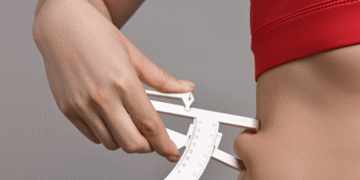A few exercises will have a greater impact on your leg and gluteus muscles in a shorter period of time than the very basic squat pulses. In use anywhere from local barre studios to high-energy bootcamps, this simple motion is usually the talk of the town with its ability to ignite a long-burning fire. But is its effectiveness enough beyond a strength training routine? Is it just a final crusher or a functional tool to make gains in the long run?
Please, let´s discuss it.
What Are Squat Pulses? Like Really?
Squat pulses require you to carry out mini-movements right at the bottom of a squat that includes no complete standup. It is a kind of exercise that involves a permanent stationariness in a deep position, where only a few inches of back and forth motion happen, which is conducive to the active status but it is not enough for rest.
It’s the relentless mode of leg burning that makes them even more hard-to-perform. Without relief, the thighs, buttocks, and hamstrings are fully active and never relax during the entire movement. The outcome is the muscles that give out heat, although there is no additional load to the exercise.
What is the reason for the continued use of the same old song by instructors?
Squat pulses help increase time under tension (TUT), an idea in resistance training that not only improves the muscle endurance but also extends the duration of each rep in order to increase the muscle mass. Therefore, many trainers include them as the last intense effort at the end of a set that in this way muscles can get more fatigued and have a better result.
However, the instructors are more likely to use them while doing group classes where they are mainly focused on intervals like 30 seconds of pulses following a basic squat hold which are designed to exhaust slow twitch muscle fibers and therefore improve muscle control skills.
What muscles burn the most?
While doing squat pulses, the muscles doing the most work are:
- Quadriceps: controlling the bounce at the bottom
- Glutes: working to stabilize and lift
- Hamstrings: engaged in the descent
- Core and calves: providing balance and support
After the execution of this exercise, the result wouldn’t be only a reduction in size, the entire lower part of the body has to work to keep everything stable and aligned.
Squat Pulses vs Regular Squats
This is not a debate of one over the other, but instead, it is about the question of choice.
- Squat pulses are very good at enhancing the endurance capacity of the muscles, developing a metabolic stress environment, and improving the performance of the muscles to remain contracted without t…
- The classic squats, on the other hand, are more effective when it comes to building maximal strength and power as they involve the full range of motion. These exercises are also suitable for progressive overload—which is the main mechanism of muscle hypertrophy.
If the aim of your exercise is more mass gain or muscle hypertrophy, it is better to get the barbell squats loaded and then start the weight progressing. However, those who are more interested in giving a leg workout without heavy weights—or trying to get low-impact burnouts—squat puls…
When and How to Use Squat Pulses
The applications of squat pulses are multiple which include:
- As a finisher after heavy squats
- As a drop set when weights are reduced
- As a warm-up drill to activate glutes and quads
- As a standalone burner in home workouts or when traveling
Changing the form from banded squat pulses to sumo pulses, or wall squat pulses can help to increase the resistance or to target different muscle groups.
And for readers who liked our earlier review of dead bug core exercises, the idea is the same, by keeping muscle tension through small movements you can equally apply it in your ab and mobility work.
Who Benefits Most From Squat Pulses?
- Beginners easing into strength training
- Athletes needing high-rep endurance drills
- Anyone short on time but craving high output
- Lifters seeking non-impact ways to exhaust muscles
Still, those who focus on pure strength and size ought to treat squat pulses as additional—except for heavy lifting and full-ROM squats.
This may sound easy but the pulse method of this exercise is one of the most potent. While they are not intended to replace your compound lifts or create the highest strength by themselves, definitely, they are a great tool for muscle endurance, mind-muscle connection, and metabolic conditioning.
When planned properly—especially during circuits or partnered with glute bridges and split squats—they can brighten up any workout session.
However, if your thighs are quaking while you are at the highest point of the pulse, there you go, that is the magic. Sometimes, the simplest of the moves give you the biggest effect of them all.
Explore more workouts that maintain strength while protecting the joints in our Fitness Archives.















